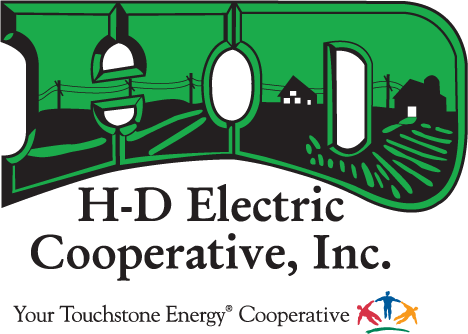UNDERSTANDING DEMAND (kW)
Energy (kWh) vs. Demand (kW)
Click to see Video Explaining Energy vs Demand
Energy Consumption (kWh)
Electric energy use is measured in kilowatt-hours (kWh). For example, a 100-watt light bulb consumes 100 watts per hour. If that bulb is left on for ten hours, it will use 1 kWh of energy.
Demand (kW)
Demand is measured in kilowatts (kW), which represents the rate of electricity use at a given moment. One kilowatt equals 1,000 watts. For example, if ten 100-watt bulbs are on at the same time for one hour, the home still consumes 1 kWh, but it places a 1 kW demand on the power provider because all bulbs are operating simultaneously.
How Can I Reduce My Demand?
To lower your demand and help reduce costs, consider these strategies:
- Stagger appliance use: Avoid running multiple major appliances at the same time.
- Shift energy-intensive tasks: Do laundry, dishwashing, or other high-energy chores outside of peak hours, such as mid-day, later in the evening, or on weekends.
- Use a programmable thermostat: Reduce heating and cooling during peak hours.
- Upgrade to energy-efficient equipment: Replace old appliances with modern, energy-saving models.
Why Should I Reduce My Demand?
H-D Electric, along with our power suppliers—Basin Electric and East River Electric—must maintain sufficient generation, transmission, and distribution capacity to meet all members’ electricity needs during peak periods. One component of H-D Electric’s purchased power cost is a demand charge, which is based on the highest peak demand of all members each month.
By reducing peak demand, members help lower H-D Electric’s overall monthly demand charge, which saves the cooperative money—and ultimately saves you money.
